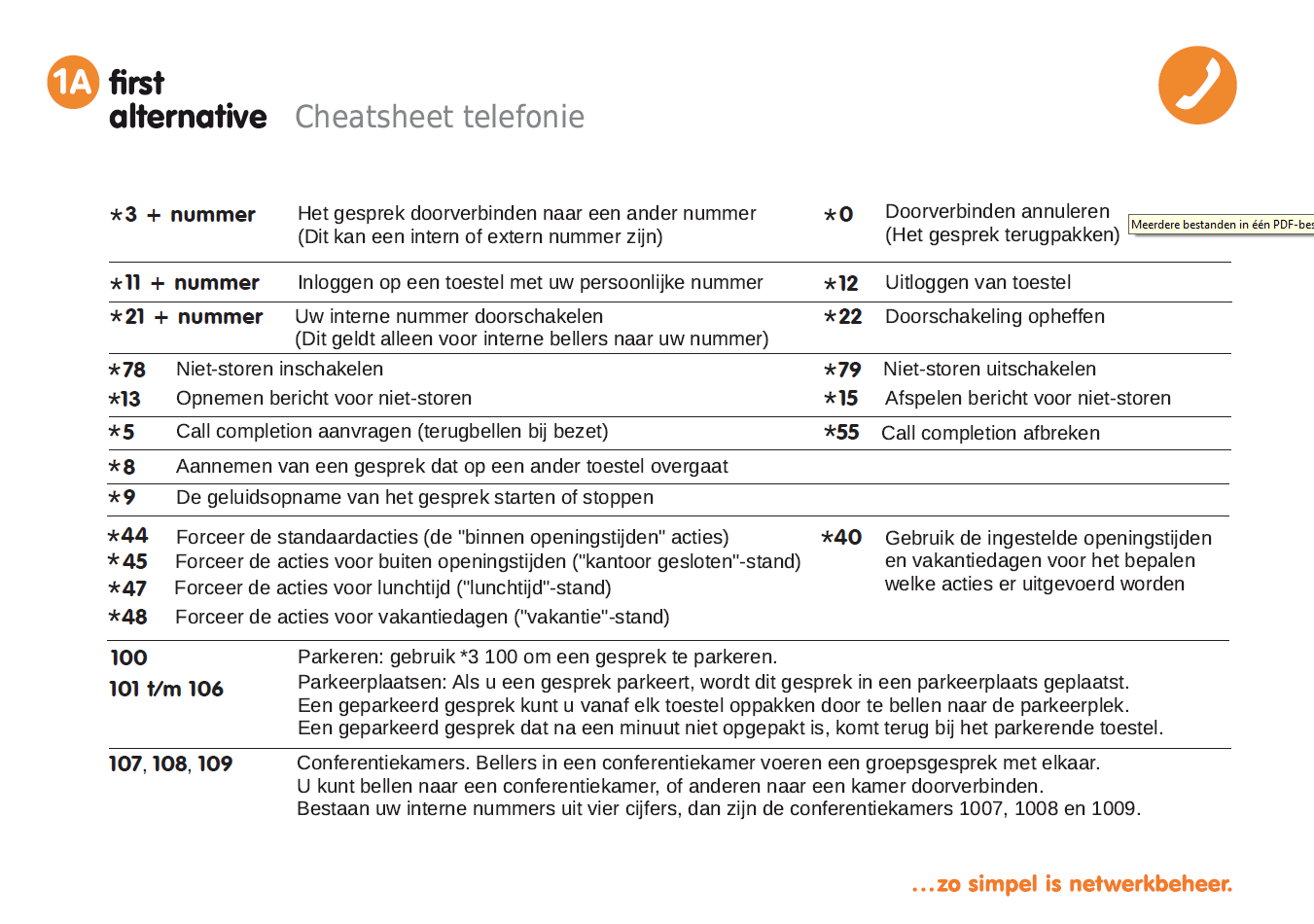VoIP: summary
This manual is intended for 1A telephony users. This manual explains how to log in on the Phonetool and a phone. You need to be logged in on both to be able to make a call with the phonetool.
1A-telephony consists of the 1A VoIP module (the telephone exchange) and a number of SIP phones (phones suitable for VoIP). Every user can manage his/her personal settings with the Phonetool.
The general settings for 1A-telephony are controlled by your own 1A administrator (see the manual Telephony for the 1A-manager). You can manage your personal settings yourself through the Phonetool. For more information about daily use of 1A telephony, see the manual VoIP: daily use.
Requirements
To complete this manual, you will need:
- Telephony on your 1A-server. No telephony yet? Please contact your 1A-partner.
- A computer with the Phonetool installed (this is done automatically on Windows computers in the company network)
- A SIP phone connected to the 1A-server
- Your username and password
- Your user number for telephony (if unknown, ask your 1A administrator)
Usage
1
Using the cheatsheet
- Download the
 Cheatsheet telefonie
Cheatsheet telefonie - Open the Cheatsheet in a PDF program, for example Adobe Acrobat Reader
- The Cheatsheet can also be viewed by clicking on the logo in the Phonetool

2
Logging in and out
*11 + number→ log in on a handset with your personal number. For example *11789 for the user with number 789.*12→ log out of a handset
3
Internal calls
- Internal numbers are all numbers where the starting digit is not 0The only exception to this is 112, the national emergency number.
When calling on an internal line you can reach a number both on number that belongs to the handset as the number that belongs to a logged in user.
4
External calls
- External numbers are all numbers that start with the digit 0The only exception to this is 112, the national emergency number.
5
Answering the phone
*8→ answer a call that is ringing on a different handset. You can only answer calls from handsets that share the same 'pickup group'. All phones are in the same group by default, but you can change the group configuration in the 1A-manager.*9→ if the recording function is active in your telephone system, *9 starts and stops the recording of the conversation. The recording will start from the moment that you press *9. You can start and stop the recording multiple times within the same call.
6
Transfer
*3 + number→ transfer the call to a different number (internal or external)*0→ cancel transfer (take back the call)
7
Do-not-disturb
*78→ activate do-not-disturb*79→ deactivate do-not-disturb*13→ record a message to be played during do-not-disturb*15→ play the message for do-not-disturb
8
Forwarding
*21 + number→ turn on forwarding of incoming calls to the given number*22→ cancel forwarding for this user or handset
9
Switch to "office open"/"office closed" mode
*40→ Use the configured office hours (follow the configured office hours)*44→ Force the standard actions ("office open" mode)*45→ Force the actions for outside office hours ("office closed" mode)*47→ Force the actions for lunchtime hours (”lunchtime” mode)*48→ Force the actions for holidays (“holiday” mode)
10
Call Completion
- Only works for internal calls
*5→ If the person you want to call is occupied, dial *5 and hang up. The phone system will call you back automatically as soon as the other person is available.*55→ Cancel a pending call completion request
11
Conference rooms
107, 108 and 109→ Conference rooms. You can dial a room, or transfer others to a room. Callers in the room hold a conference call with each other.
If your internal numbers are four digits long, use 1007, 1008 and 1009.
